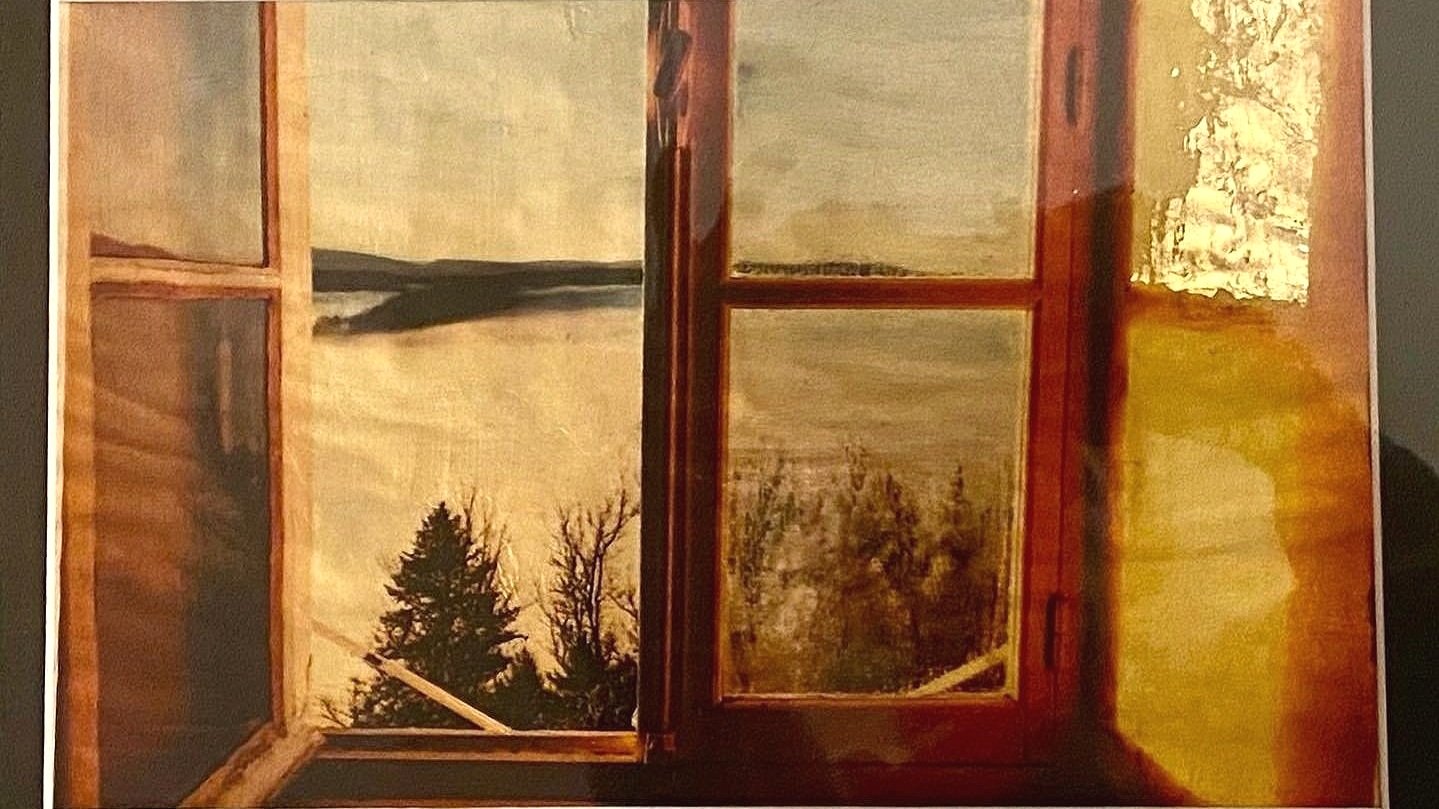Weathered barn, Orange County, NC. Black and white vellum print with silver leaf. 8” x “11.
Winter window, Doubs region, eastern France. Color print on
vellum with gold leaf. 8” x “11.
Ovenbirds
Abandoned house, Morganton, NC. Sepia print on vellum with gold leaf.
Gilded Photographs
One-of-a-kind photographic prints on vellum
backed with gold, silver, or copper leaf
Ghost trees on concrete wall, downtown Raleigh, NC. Black and white print on vellum with gold leaf. 8” x 11” image in 11” x 14” matted vintage frame.
This series celebrates the ordinary — concrete walls, broken-down buildings, rusted cars, leafless trees. I’ve printed these images on transparent vellum, then backed them with gold, silver and copper as a way to honor their profound beauty.
All images are 8” x 11” and are available alone or with 11” x 14” matted vintage frames.
The American poet Robert Frost elevates the ordinary in his sonnet, “The Ovenbird.” The sonnet form is usually reserved for grand themes — love, honor, death. Frost uses it to contemplate a small, brown bird who nests on the forest floor. The bird’s call is modest but profound, asking “in all but words / … what to make of a diminished thing.”
Rusted vintage car, Richard’s Auto Sales & Salvage, Denton, NC. Color print on vellum with copper leaf.
Rusted Ford, Chatham County, NC. Color print on vellum with silver leaf.
Winter tree, Burnsville, NC. Black and white print on vellum with gold leaf.
The Ovenbird
There is a singer everyone has heard,
Loud, a mid-summer and a mid-wood bird.
Who makes the solid tree trunks sound again.
He says that leaves are old and that for flowers
Mid-summer is to spring as one to ten.
He says the early petal-fall is past
When pear and cherry bloom went down in showers
On sunny days a moment overcast;
And comes that other fall we name the fall.
He says the highway dust is over all.
The bird would cease and be as other birds
But that he knows in singing not to sing.
The question that he frames in all but words
Is what to make of a diminished thing.
–Robert Frost (1916)
My Gilding Process
Photograph an “ordinary” object or scene: a decaying barn, a concrete wall, a rusting car, sunlit wildflowers.
Print the photograph onto a translucent paper called vellum. Vellum is traditionally made from goatskin. I prefer the non-animal kind.
Spray shellac to the front of the print to stabilize the image and add sheen.
Apply gilding glue (sizing) to the back of the print. Let it dry.
Carefully, carefully, apply gold, silver, or copper leaf to the sticky vellum. (I use metal leaf, made of brass and copper.) The leaf is so thin and light that it can fly away on the slightest breeze, or tear with the slightest wrong movement.
Cover the leaf-backed print with wax paper and place heavy books on it to flatten it (vellum curls when wet.) So annoying.
Remove the weight and brush extra leaf off the dried print.
If the image seems to warrant it, add small amounts of leaf to the front of the image.
Spray clear shellac to the gilded side of the print to keep the leaf from tarnishing.
If all goes according to plan, the metal leaf will glow through the lightest parts of the photograph, transforming my “ordinary” image into something precious and one-of-a-kind.






